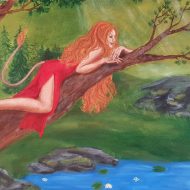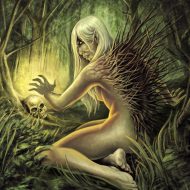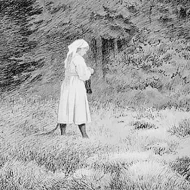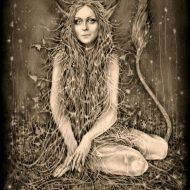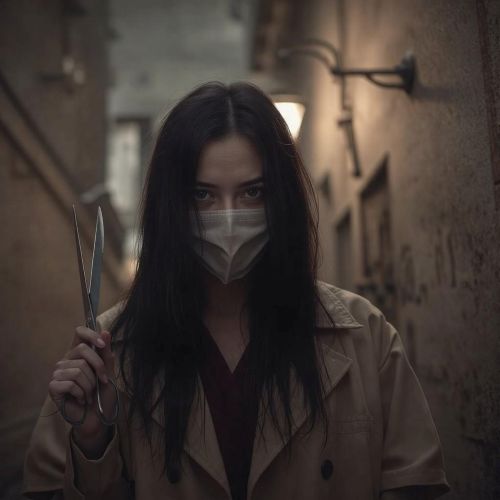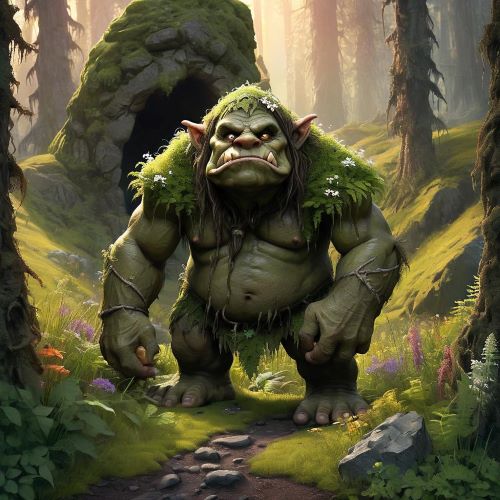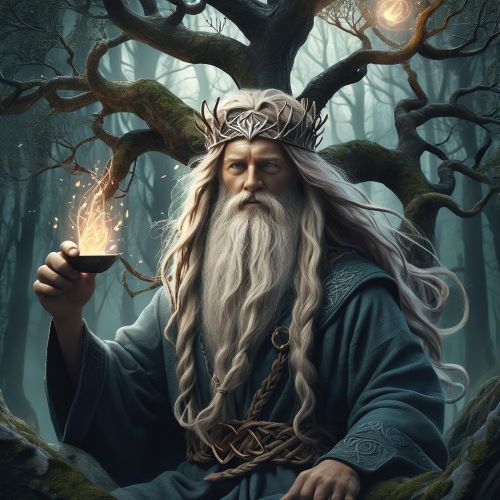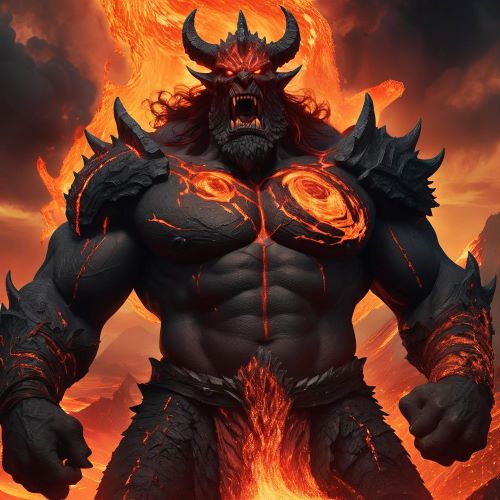Huldra : The Norse Troll
At a glance
| Description | |
|---|---|
| Origin | Norse Mythology |
| Classification | Hybrids |
| Family Members | N/A |
| Region | Scandinavia |
| Associated With | Hypnotism, Fishing, Luring Men |
Huldra
Introduction
In Scandinavian and Germanic folklore, the huldra are beautiful creatures that live in seductive forests. Their name, which literally means “covered,” is believed to be due to the way they try to hide their mystical nature. In most folk tales, the huldra were only interested in sex and dancing. Even these stories have unhappy endings as the men would later grow mad because they spent too much time with the Huldra or the Elven people. Most Norse folklore refers to the huldra as a type of “ra,” which literally means “nature’s keepers.”
The havsfru or aquatic sjörå are considered to be the ancestors of the mermaid myth, and they are related to the Huldra. Following the adoption of Christianity in Scandinavia and Germany, a new origin myth about the huldra emerged. It states that God once owned a cottage, but he only had time to wash half of his children. A woman was said to have tried to hide her children, but God saw them and decided that they were not human. The children were then called huldras.
Physical Traits
All across Germany and Scandinavia, there is a common belief that the huldra are beautiful blonde women who wander around human settlements. Tall and slender, with long golden hair and a crown made out of flowers, these women are known to appear in front of lone young men. Hulders are different from human women in that they don’t have hollow backs or tails. Instead, they have cow’s tail that sticks out from their robes or dresses. The hulders try to hide their tail when they are performing their tricks, but in most myths, young men are given the opportunity to react to it.
Huldras who have lost their hollow back and tail would often dance a rune dance. In the mornings, you would often see what looked like a witch circle in the forest or near swamps. These beautiful women were known to live in areas affected by moss, and they were often seen wearing white clothes and blonde hair. They would dance on top of burial mounds during thick mist.
The Danish version of the Huldra is missing its cow tail and hollow back due to the various folk tales that have been told about them. There are only a few places where you can find this characteristic in the lore. In most of the stories, the hulders are only interested in sex and dancing.
Other Names
In Sweden, the huldra are called skogsra, tallemaja, or the pine tree Mary, and in folk tales, the ulda is referred to as a “forest spirit.” Male huldras are also known as huldrekall, and in some Norwegian folk tales, these are referred to as male forest dwellers. While the huldra are beautiful seductresses, the huldrekall are ugly. They are also commonly referred to as hulder.
Powers and Abilities
In some folk tales, the huldra are friendly and can offer advice on where to find the best fishing. However, in others, they are dangerous and attract men by their appearance and singing. These fair-haired beauties are known to lure men into the woods by playing harp or singing.
Hulders are known to punish their betrayed victims severely. They help set limits, make enemies, and give valuable gifts. The way they react to people is influenced by how they are treated. If you treat a Hulder with respect, she will give you the same response.
If a human man saw the Huldras dance, he would be instantly hypnotised into joining them. The girls would then dance to death as their partner slows down, while the man would only have a few hours. If a person decided to kidnap a human, they would use the Huldras for sex. Those who had sex with the elves would most likely become mentally ill or die.
Modern Day Influence
Although the huldra are not widely represented in modern culture, their various variants, such as the witches and the elves, are very popular in fantasy literature and video games. There are also interpretations of the myth in various forms of media. In 2016, a horror film called Huldra: Lady of the Forest was released in Norway. Also, in the U.S. and Norway, several metal and folk bands have been known to use the name Huldra. Some works of fiction, such as C.S. Lewis’ The Silver Chair and Neil Gaiman’s short story Monarch of the Glen, feature the huldra. Frank Beddor’s Seein Redd and George MacDonald’s Phantasies and Trolls feature variants of the huldra myth.
Related Images
Frequently Asked Questions
What does the huldra do?
In Norse mythology, the Huldra are seen as beautiful women who lure human men into marrying them. By marrying them, the Huldra will lose their hollowed back and tail.
Can huldra be male?
No. The Huldra are traditionally all female while the male versions are known as huldrekall and are not very common in Norse folklore.
Are Huldra trolls?
The Huldra are tolls but are considered to be very beautiful unlike the traditional depiction of trolls from other European mythologies.
What does Huldra mean?
The word huldra can be translated to secretive, secret or covered.
What does the Huldra do?
The huldra are considered to be beautiful and adept at the art of seduction. They seduce unsuspecting men and marry them in order to rid themselves of their tail and back.


